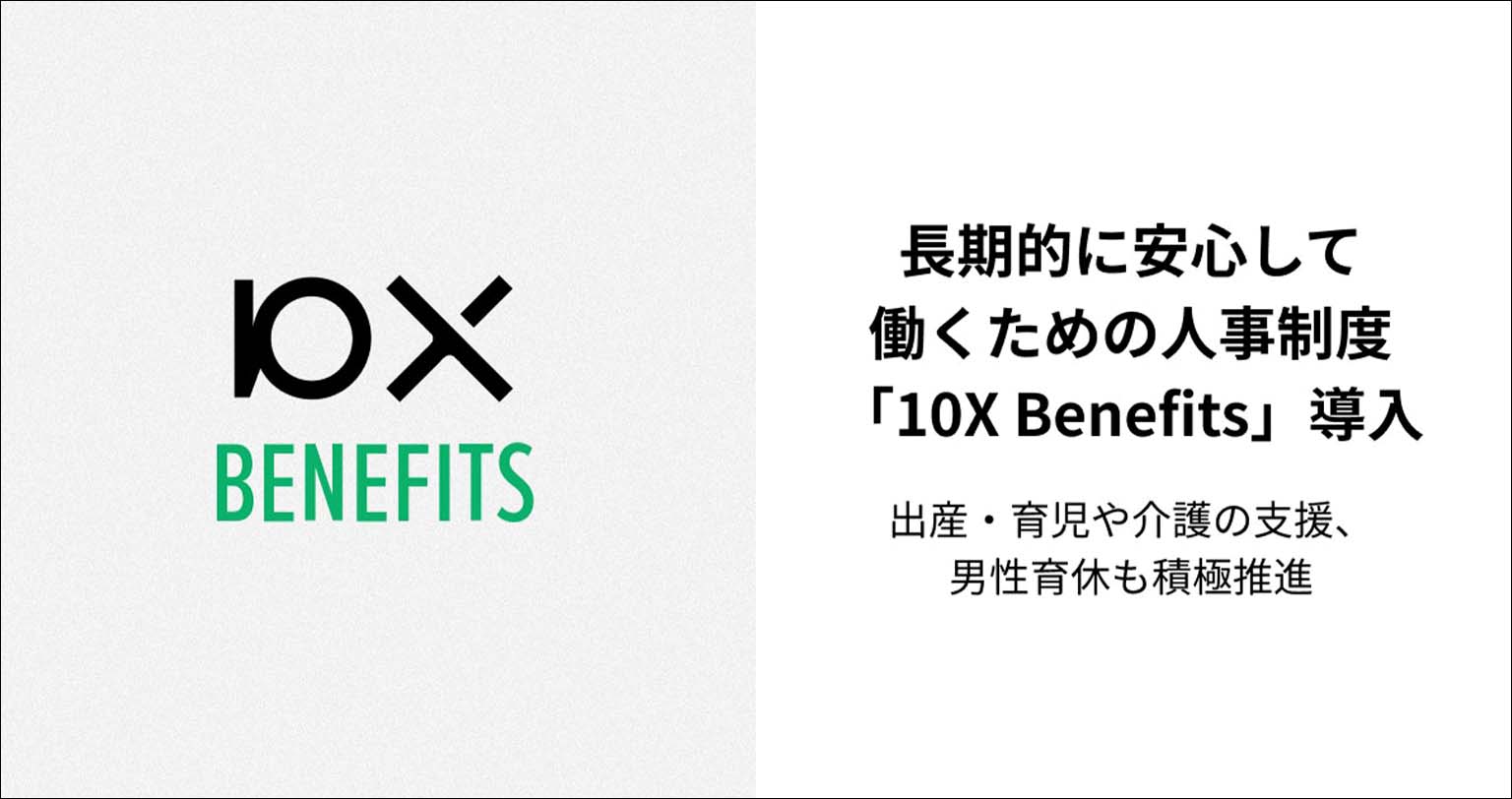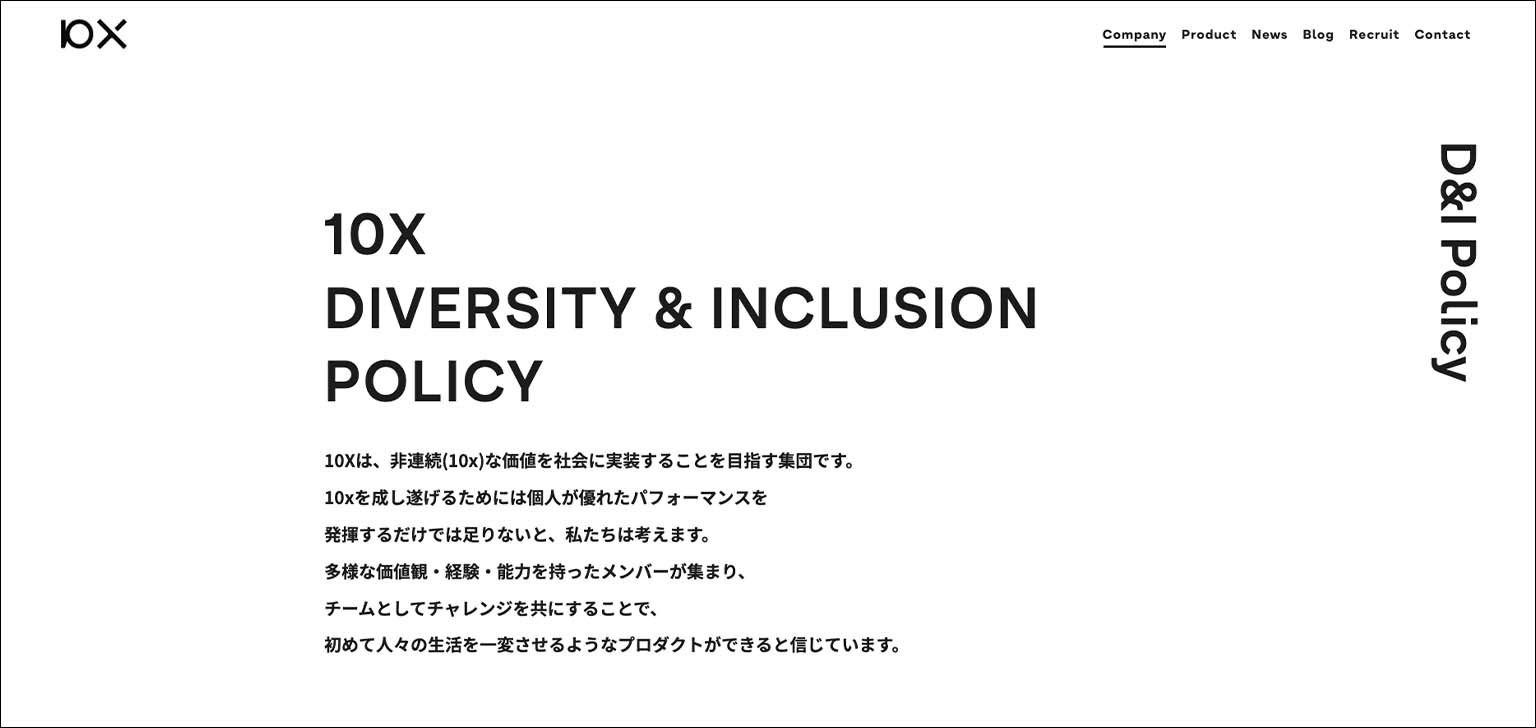Startups Building a Sustainable Society (4): Diversity Initiatives at Japanese Startups
ESG management is undoubtedly becoming a key to building a strong organization.

Written by the Universe editorial team
“Organization development” may be one of the keys to the question of whether startups should address ESG.
In September, the MPower Partners Fund, an ESG-focused fund in Japan’s startup ecosystem, reported on the results of an interesting survey conducted in collaboration with Boston Consulting Group. According to the survey conducted among 50 startups in Japan, more than 90% of the respondents felt that their ESG initiatives were effective, and nearly half of them said that they felt the effects in recruiting and retaining talent.
The fund’s easy-to-understand playbook describes why startups should address ESG. Particularly, it states securing talented personnel as one of the "eight values that startups can gain from ESG practices.”
Japan’s Ministry of Economy, Trade and Industry (METI) is also promoting “diversity management,” a management style that leverages diverse human resources to create value. Moreover, growing companies such as Mercari and RAKSUL that have gone public in the past decade have successfully integrated the ESG framework into their organizational development and hiring practices.
While ESG management is becoming undoubtedly vital to build a robust organization, it is also important to have a framework and evaluation structure that allows people with diverse values to join to live in a sustainable society and carry out economic activities together. This article will introduce methods and actual practices of how startups can leverage ESG for the benefit of their organizations, focusing on diversity and inclusion.
What does “S” (Social) in ESG mean?

In September, Mercari shared the status of its “YOUR CHOICE” policy that allows employees to choose diverse ways of working. In this program, employees can choose their own working place, where they live, and when they work. For example, all public transportation including airplanes and bullet trains can be used to commute to work, and employees can enjoy full flexibility in their working hours, enabling them to step away from their work in the middle of the day.
According to the results of the released survey, more than 90% of employees have chosen to work remotely and nearly half of them have changed their living environment, and more than 70% step away from their desk in the middle of the day to pick up and drop off their children at daycare centers, etc. Employees are very satisfied with being able to balance work and life at their own discretion.
Mercari’s commitment to their organization dates back to the establishment of the “merci box,” a HR program that guaranteed 100% of salary during nursing care leave. Back in 2017, the company made headlines for establishing a fully paid nursing care leave program, which was still rare for a startup. Now, its approach to people and organization has evolved and is summarized on its current recruitment page. They have established values that serve as a code of conduct to support their mission and foundations to realize them. “YOUR CHOICE” policy, which defines the flexible ways of working mentioned above, was also created in line with this concept.
And on the recruitment page, the phrase “Diversity & Inclusion” particularly catches our eye.
According to MPower Partners Fund, major elements for Social in ESG are defined as data security and privacy, employees’ health and safety, and DEI (Diversity, Equity, and Inclusion).
The D(E)&I policy and work style agendas are the topics that should be addressed particularly by young startups for whom organizational development is essential. Shown below is the case of 10X, a Japanese startup.
10X’s diverse work styles

Founded in 2017, 10X has about 80 members working throughout Japan. Based on the philosophy of delivering discontinuous growth to society, the company offers “Stailer,” a digitalization support platform for retailers, which is designed to help supermarkets, drugstores, and other retailers launch the e-commerce business. Major Japanese supermarket operators such as Ito Yokado and Life have introduced the platform as the infrastructure for their online supermarkets.
The company’s efforts for diverse work styles are the foundation of its growth. Its HR program “10X Benefits” was established last June, providing guidelines for working styles and has put into words its efforts to create a comfortable working environment over the medium to long term. As part of the program, the company actively encourages new fathers to take paternity leave. In January 2022, it also launched “10X Workstyle,” a system that allows employees to freely choose where they work between office and remote locations. Many employees are choosing a work environment that suits their lifestyles, according to the company.
The company’s diversity and inclusion initiatives are also clearly stated as part of its efforts to communicate its working environment to the public. That is the “10X DIVERSITY & INCLUSION POLICY,” which was announced two months before the launch of its HR program. However, Rika Nakazawa, director and CCO in charge of communication, found some points for improvements. A year and a half has passed since the announcement, and we asked her about the effects and issues that need to be addressed.
What 10X has gained from its diversity initiatives

It was around the beginning of 2021 that 10X started to consider diversity and work style initiatives. The gender controversy triggered by the Tokyo Olympics prompted 10X’s CEO, Masatake Yamoto, to ask the members how the company’s stance on diversity and inclusion should be.
10X had many chances to think about diversity, as the CEO was raising children and the company was providing a menu planning app called "Tabely” for everyday meals.
Nakazawa joined the initiative when other members were at a loss for where to start, which led to the discussion to move forward. She says, “I suggested that it was important to start thinking about diversity when the organization is still small and that we should start with having a common understanding of our stance on diversity leaving aside numerical targets or other things. He agreed with me and asked me to deliberate about it.”
Nakazawa began consulting the guidelines of METI and other organizations for information. After conducting interviews with experts, the current policy was formulated with focus on its relevance to the company’s mission and business.
What were the impacts brought by this initiative?
“I don’t think anything has drastically changed in the company. Everyone’s awareness of diversity was already pretty high even before the policy was announced. Of course, no one had ever tried to undermine diversity, and in fact, many male employees had taken their paternity leave, so I believe we have been providing a comfortable working environment where employees can also value their time outside of work.
However, these kinds of things were not communicated to the public before, which was the problem. So I was happy enough with people outside the company reading our policy and coming to realize that we had these ideas in mind for a long time." Nakazawa says.
Nakazawa and her team saw the results come along gradually.
For example, when asked in a recruitment interview or after joining 10X, an increasing number of people have mentioned such working style and diversity/inclusion as one of the reasons, if not the top, for choosing to work at 10X.
However, there are also challenges.
The “ratio of female employees” is one of the notable issues. A year and a half ago when the policy was formulated, the ratio at 10X was about 15%. Even today, it is just over 20%, and has not changed that much. The company says the reason for this is that they did not set a specific goal.
Although they had formulated a diversity policy, they found it difficult to decide how to quantify specific recruitment actions. As a result, they could not take sufficient actions and see a visible change in the ratio of female employees.
Nakazawa and her team said they are planning to set a new goal of 30% in two years. It will be interesting to see what kind of actions they will take to achieve this goal.